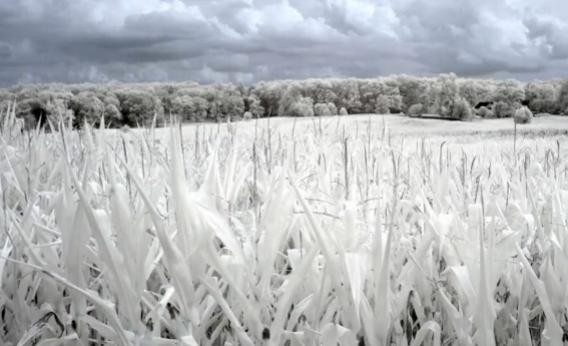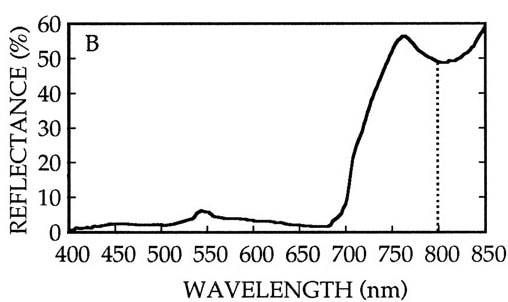Create a free profile to get unlimited access to exclusive videos, sweepstakes, and more!
Movements in (Infra)Red

Look around you. What do you see?
You may have an amazing array of objects around you that you can see in fine detail, their colors vivid and bright, what seems like an amazing variety of hues.
But think on this: What you’re seeing is just an incredibly small slice of what’s actually there. Our eyes are sensitive to only a relatively few colors available in the electromagnetic spectrum—the scientific term for “light”. The bluest color we can see has a wavelength of about 400 nanometers (a nanometer is a billionth of a meter; for comparison, a human hair is 100,000 nm wide), and the reddest about 700—not even a factor of two in range! But light can have wavelengths far smaller than a nanometer at one end of the spectrum, and kilometers long at the other (theoretically, there is no limit to how long a wavelength can be).
Near-infrared (NIR) light has a wavelength just outside what we can see on the red end, with wavelengths from 800 to roughly 2000 nm (NIR is more of a generic term than a specific color range). While our eyes can’t detect it, the light-sensitive chips in cameras usually can. And when you use a filter that blocks visible light but lets through the NIR, the world looks different. Mostly the same, but with an odd twist, a skewed balance of brightness that makes it seem unearthly, delicate, and beautiful.
Photographer Andrew Hurtleff took advantage of this to create an astonishing time-lapse video using infrared images, which he calls Movements in Red:
[Make sure it's set to hi-def and make it full screen.]
The shots making up the video are familiar scenes, but the lighting is just peculiar. The most obvious change is that leaves appear bright white, almost glowing. Leaves absorb almost all wavelengths of visible light except for green, which they reflect. When that light hits our eyes, we see the leaves as being green (ironically, we say the leaves are green, when in fact that’s the color of light they reject).
But in the infrared things are different. Here is a graph showing the color of the light reflected by leaves (specifically Chionophila jamesii, commonly called Snowlover):
The colors go along the horizontal axis, and the percentage of light reflected along the vertical (100% would be total reflection and 0% total absorption). You can see a small bump around 550 nm, which is green light. But then look to the infrared: Starting around 700 nm, just outside our vision, the reflectance rockets up. So while leaves to our eyes appear bright in the green, to something with infrared eyes—like Hurtleff’s camera—leaves are far brighter.
I’ll note that using an IR filter means very little visible light gets into the camera at best, so any sense of actual color you see in the video is probably added afterward for artistry; Hurtleff has several fine art infrared prints on his site, and in some the sky is blue. Scientifically that’s a bit of a stretch, but artistically the effect can't be denied. It’s eerily beautiful.
By the way, you can see all this for yourself. If you have any sort of electronic camera (in your phone, say), point a remote control at it and hit a button on the remote. Your eye will see nothing, but through the camera you’ll see the diode at the remote’s tip glowing or flickering. Most remotes use encoded near-infrared pulses to control your electronics, invisible to the eye but quite bright to your camera (and, of course, to the infrared sensors on your electronics designed to receive the signals).
It’s a reminder that everyday, all the time, you are surrounded by invisible information. We are all blind to it…unless, of course, we have science. With that, we can literally see better the true nature of the world around us…and we can find there is more beauty there than normally meets the eye.
Tip o’ the lens cap to Jeremy Huggins.















